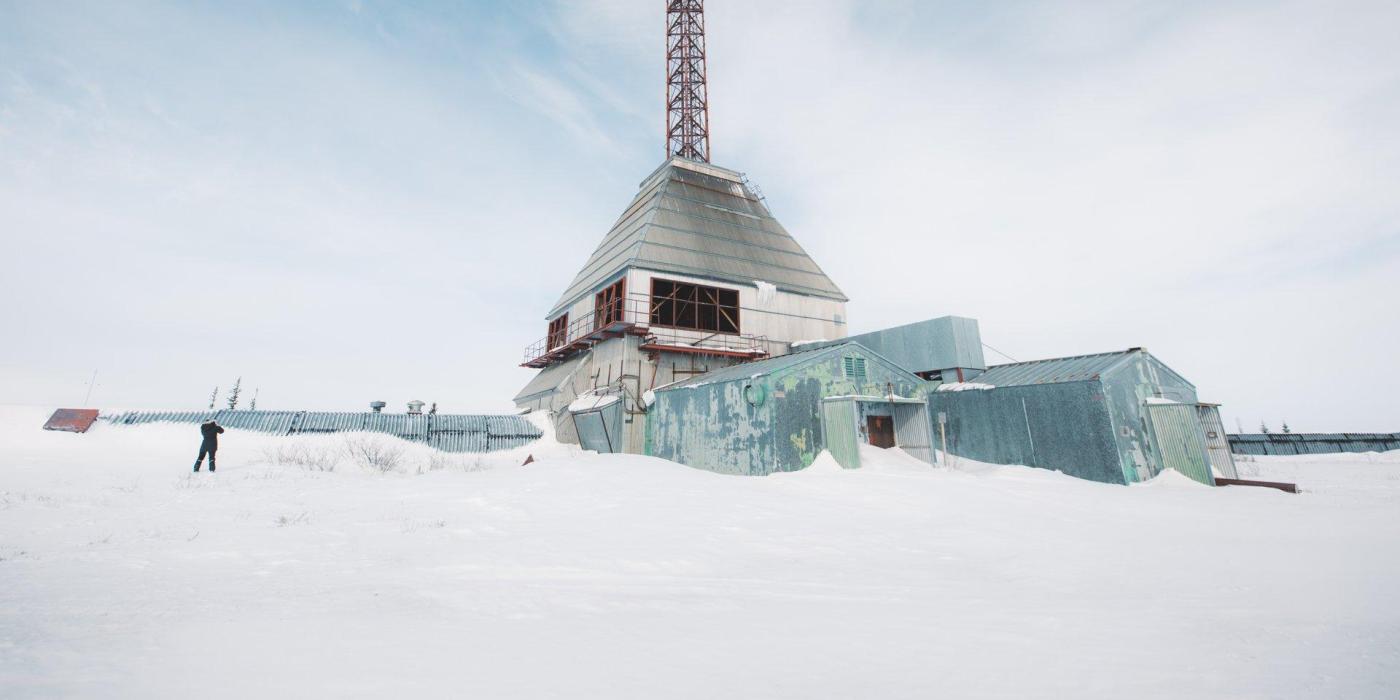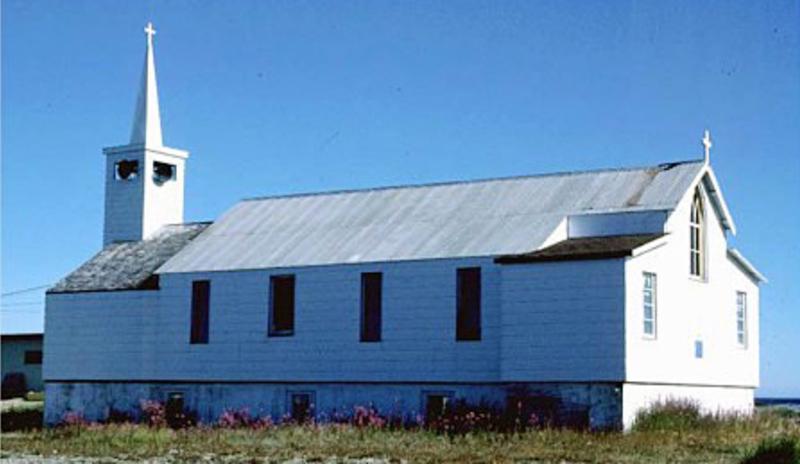Art & Architecture
133 Albert Street Winnipeg, MB R3B 1G6
Loading your recommendations…

Churchill, an isolated town in Manitoba’s north along the Hudson Bay coastline, is a magnet for outdoor adventurers and nature lovers. Experiencing Churchill’s natural wonder triumvirate – kayaking with belugas, chasing the Northern Lights and seeing...
The Parks Canada Visitor Centre is located inside Churchill’s historic rail station. Exhibits highlight the area’s unique ecology, as well as Indigenous and European history.
The Itsanitaq Museum features a large collection of contemporary Inuit carvings in ivory, soapstone and bone. It is also home to artifacts and carvings tracing the history of the Pre-Dorset, Dorset and Inuit peoples dating back to 1700 B.C.E.
Relive the fur trade era with a visit to the Prince of Wales Fort National Historic Site located across the Churchill River from town. This 300 year-old stone fort was established by the Hudson Bay Company. Take a Parks Canada guided tour during the summer months. Explore the ramparts and hear the stories of Indigenous heroes and hardy settlers. The Cape Merry cannon battery is accessible by road from Churchill. It was built to guard the mouth of the river. See one of the original 42 cannons from Prince of Wales Fort.
St. Paul’s Anglican Church is the first prefabricated building in North America. This designated provincial heritage site is the oldest church in the North still in use. It started as a kit of pre-fab components made in England that were assembled on the west bank of the Churchill River. The church was then was moved in winter by sledge to the other side of the river followed by a final relocation to another street.

Discover beautiful depictions of Churchill’s culture, history and wildlife in 18 murals painted on buildings located in and around town. Artists from around the world participated in SeaWalls Churchill.
An interesting site that now boasts a mural is the Polar Bear Holding Facility, also known as the polar bear jail. Polar bears that wander into town are held in this facility until they can be safely relocated into the wild. A visit to the Polar Bear Holding Facility is included in itineraries in most town and area tours.

The wreck of the MV Ithaca sits at the western tip of Bird Cove, close to town. Mystery shrouds the exact details of this shipwreck. One version of the story tells how the ship ran aground in a terrible windstorm in 1961 while carrying nickel ore from Rankin Inlet to Montreal. Another variation says that in 1960, the ship broke its right rudder and floundered while carrying supplies from Churchill to Rankin Inlet. While it is too dangerous to board the ship’s remains, you can get a little closer with a short guided hike during low tide.

The Churchill Rocket Research Range was established in 1957 to launch sounding rockets carrying experimental payloads into the upper atmosphere. Chosen in part for Churchill’s auroral activity levels, the Research Range was the base for scientific research into the upper atmosphere for almost 30 years.
Operated by various agencies over the years (including the Canadian Space Agency for a series of NASA launches), over 3,500 sounding rockets were launched from the range before it closed in 1985. Akjuit Aerospace temporarily reinvigorated the range from 1994 to 1998 and renamed it Space Port Canada. Today, the site is home to the Churchill Northern Studies Centre – a field station home to researchers and scientists who welcome visitors for learning vacations. The site’s overall significance led to a National Historic Site of Canada designation.

Miss Piggy is a Curtiss C-46 freight plane owned by Lamb Air. On a 1979 flight, the plane had engine trouble during its approach to the runway and managed to land among the rocks without a fatality. There is some debate over how the plane earned the nickname Miss Piggy (was it for being overloaded or because it once carried a load of pigs?). Check out the downed plane by venturing down a scenic back road skirting the shore of Hudson Bay.

Making for the perfect photo op, this large Inukshuk is located behind the Town Complex on the shores of Hudson Bay.

The Parks Canada Visitor Reception Centre in the Churchill’s VIA Rail Station houses exhibits about the human and natural history of the area. Audio-visual presentations are also available on the wildlife and history of the Churchill area.
The centre displays a collection of Hudson’s Bay Company muskets and trade goods, including replicas from the 1700s and 1800s. Parks Canada staff are also happy to provide information on the area, including the Prince of Wales Fort, Cape Merry and York Factory National Historic Sites, and Wapusk National Park of Canada.
The Cape Churchill Wildlife Management Area and Cape Tatnam Wildlife Management Area serve to protect significant tracts of Hudson Bay coastline south along Hudson Bay and east to the Ontario border.

The areas protect the fragile coastal and tundra ecosystems that provide habitat for polar bears, caribou and geese. The old military road to Twin Lakes provides access to boreal forest for wildlife viewing, bird watching and hiking.
The Boreal Gardens is a privately owned and operated experimental Arctic research project comprised of greenhouses and gardens growing various types of produce.
Tours are offered Sundays from 2:00 to 4:00 p.m. during July and August, and other times by appointment.
St. Paul’s Anglican Church, the first prefabricated building in North America and a designated heritage site by the Province of Manitoba, is the oldest church in the North still in use. It originated as a kit of pre-fab components made in England, was assembled on the west bank of the Churchill River, then was moved in winter by sledge to the other side of the river followed by a final relocation to another street.

St. Paul’s also has ties to the exploration era – Lady Franklin donated a stained-glass window in memory of her husband Sir John Franklin, the famous Arctic explorer. It can still be seen today.
Located on the edge of the Arctic, Churchill offers the feel of a frontier town with the amenities of an international tourist destination. A unique and accessible Arctic community, the town comes alive each time the train or plane arrives.
Polar bears are everywhere – on murals, signs, souvenirs, and sculptures – and the live version occasionally wanders in to town as well! Snowmobiles roar through town in winter and ATVs cruise by in summer.
The town of Churchill grew from a remote outpost to a bustling seaport with the construction of the Hudson Bay Railroad and Port of Churchill in the late 1920s. Through much of the 1950s and 1960s, the town was a thriving military community.
Culture & History
Via Rail Station - 123 Main Street, Unit G
WINNIPEG, MB R2V 4E2
Culture & History
27 Red River Boulevard, Unit G
WINNIPEG, MB R2V 4E2
Culture & History
111 Railway Ave
INGLIS, MB R0J 0X0
Culture & History
450 Broadway
Winnipeg, MB R3C 0V8
Culture & History
450 Broadway
Winnipeg, MB R3C 1S4
Culture & History
133 Albert Street
Winnipeg, MB R3B 1G6
Culture & History
Via Rail Station - Union Station, 123 Main Street
WINNIPEG, MB R3G 2Y4
Culture & History
Via Rail Train Station 123 Main Street, Unit G
WINNIPEG, MB
results 1- 48 of 48
Known as the polar bear capital of the world, Churchill is also known as a beluga whale watching hotspot and one of the best places to see the northern lights.
Start planning your trip to see beluga whales, polar bears or the northern lights!
Learn about the history of Churchill and its surroundings, from the Pre-Dorset to Modern Inuit cultures through to the european fur trade and exploration of the North.
Experience The North
Popular Searches
Things To Do
Trip Essentials